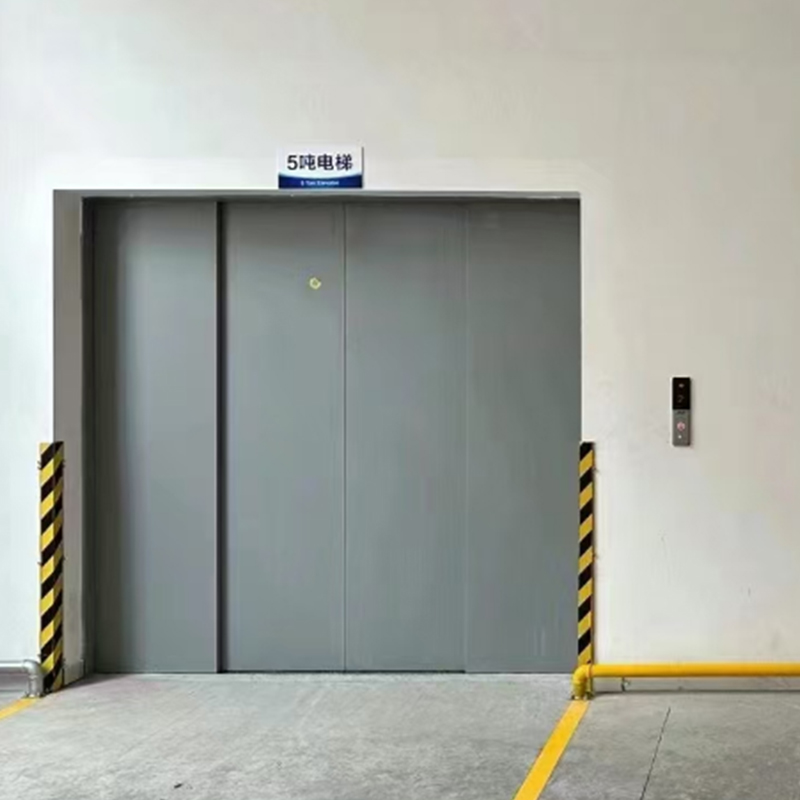
How does the traction drive system become the core force for the efficient operation of Commercial Heavy Duty Freight Elevator?
Posted by Admin | 19 Jun
I. Basic composition and operation principle of the traction drive system
(I) Core components of the system
The traction drive system is mainly composed of key components such as traction machine, wire rope and guide wheel. Among them, the traction machine, as the power source of the entire system, is like the heart of the commercial heavy-duty freight elevator. Its performance directly determines the power output and stability of the elevator operation. The wire rope is the link between the car and the counterweight device, carrying the weight of the goods and the car, and plays a role in transmitting power during the operation of the elevator. The existence of the guide wheel is crucial. It provides guidance for the wire rope to ensure that it maintains the correct trajectory during operation, avoids problems such as entanglement and deviation, and ensures the safety and reliability of the elevator operation.
(II) Analysis of the operation mechanism
The operating principle of the traction drive system is based on the traction machine driving the traction wheel to rotate, and using the friction generated between the wire rope and the traction wheel to drive the car to achieve lifting and lowering movement. When the traction machine starts, the traction wheel starts to rotate. Due to the friction between the wire rope and the surface of the traction wheel, the wire rope will move with the rotation of the traction wheel, and then pull the car up or down along the guide rail. In this process, the counterweight device is connected to the car through the wire rope on the other side, which plays a role in balancing the weight of the car, effectively reducing the operating load of the traction machine, and improving the operating efficiency and energy saving effect of the elevator. Compared with other driving methods, this friction-driven method has the characteristics of smooth transmission, safety and reliability, and can meet the needs of frequent and heavy-load operation of commercial heavy-duty freight elevators.
2. Advanced permanent magnet synchronous motor technology empowers traction drive system
(I) High power density characteristics
Advanced traction machines use permanent magnet synchronous motor technology, and one of its significant advantages is high power density. This means that permanent magnet synchronous motors can output powerful power at a relatively small size and weight. For commercial heavy-duty freight elevators, this feature allows the traction machine to provide sufficient driving force for the elevator within a limited installation space to meet the needs of transporting heavy goods. In large logistics warehouses, there are many types of goods and they are heavy. The traction drive system using permanent magnet synchronous motors can easily cope with various heavy-load conditions, ensuring that the elevator can quickly and stably transport the goods to the designated floor, greatly improving the efficiency of logistics operations.
(II) Advantages of high efficiency and low energy consumption
The application of permanent magnet synchronous motor technology allows the traction drive system to show the outstanding advantages of high efficiency and low energy consumption during operation. When traditional motors are running, there are problems such as low energy conversion efficiency and large energy loss. By optimizing the motor structure and control strategy, permanent magnet synchronous motors reduce energy loss during conversion and transmission, and improve the efficiency of converting electrical energy into mechanical energy. In practical applications, commercial heavy-duty freight elevators using permanent magnet synchronous motors can significantly reduce power consumption and effectively save operating costs when completing the same transportation tasks compared to elevators using traditional motors. This not only conforms to the current global concept of energy conservation and emission reduction, but also brings tangible economic benefits to enterprises. At the same time, lower energy consumption also means less heat generated when the motor is running, which extends the service life of the motor and related components and reduces maintenance costs and frequency.
III. Application scenarios of traction drive system in commercial heavy-duty freight elevators
(I) Cargo transportation in large industrial plants
In large industrial plants, the production process is complex, and cargo transportation is frequent and in high demand. From the handling of raw materials to the transfer of semi-finished products and finished products, the traction drive system equipped with Commercial Heavy Duty Freight Elevator plays an indispensable role. In mechanical manufacturing plants, the weight of parts of large mechanical equipment can reach several tons or even tens of tons. With its powerful power and stable operating performance, the traction drive system can safely and efficiently transport these parts to different production stations to ensure the smooth operation of the production line. Moreover, due to the low energy consumption advantage brought by permanent magnet synchronous motor technology, in the long-term and large-scale cargo transportation process, it saves enterprises considerable energy costs and helps enterprises achieve green production.
(II) Cargo transfer in high-rise logistics warehousing
With the increasing shortage of land resources, high-rise logistics warehousing buildings have gradually become mainstream. In these high-rise storage facilities, goods need to be frequently transferred between different floors, which puts higher requirements on the performance of freight elevators. The traction drive system has become an ideal choice for high-rise logistics warehousing cargo transfer due to its excellent lifting capacity and stable operation status. Whether it is transporting goods from the ground to high-rise shelves for storage, or taking them off the shelves and transporting them to the sorting area, the traction drive system can complete the task quickly and accurately. At the same time, its good compatibility with the automated logistics system can achieve seamless docking with automatic guided vehicles, conveyor lines and other equipment, build an efficient automated logistics transportation network, and further improve the operating efficiency and management level of logistics warehousing.
-
 Founding Road, Qidu Linhu Economic Zone, Wujiang City, Jiangsu Province, China
Founding Road, Qidu Linhu Economic Zone, Wujiang City, Jiangsu Province, China
-
 [email protected]
[email protected]
-
 +86 17701557926/+86 0512-63818375
+86 17701557926/+86 0512-63818375


 En
En English
English русский
русский Español
Español عربى
عربى





